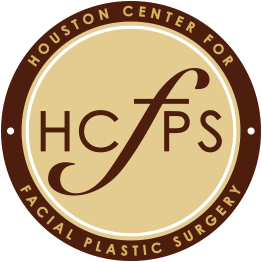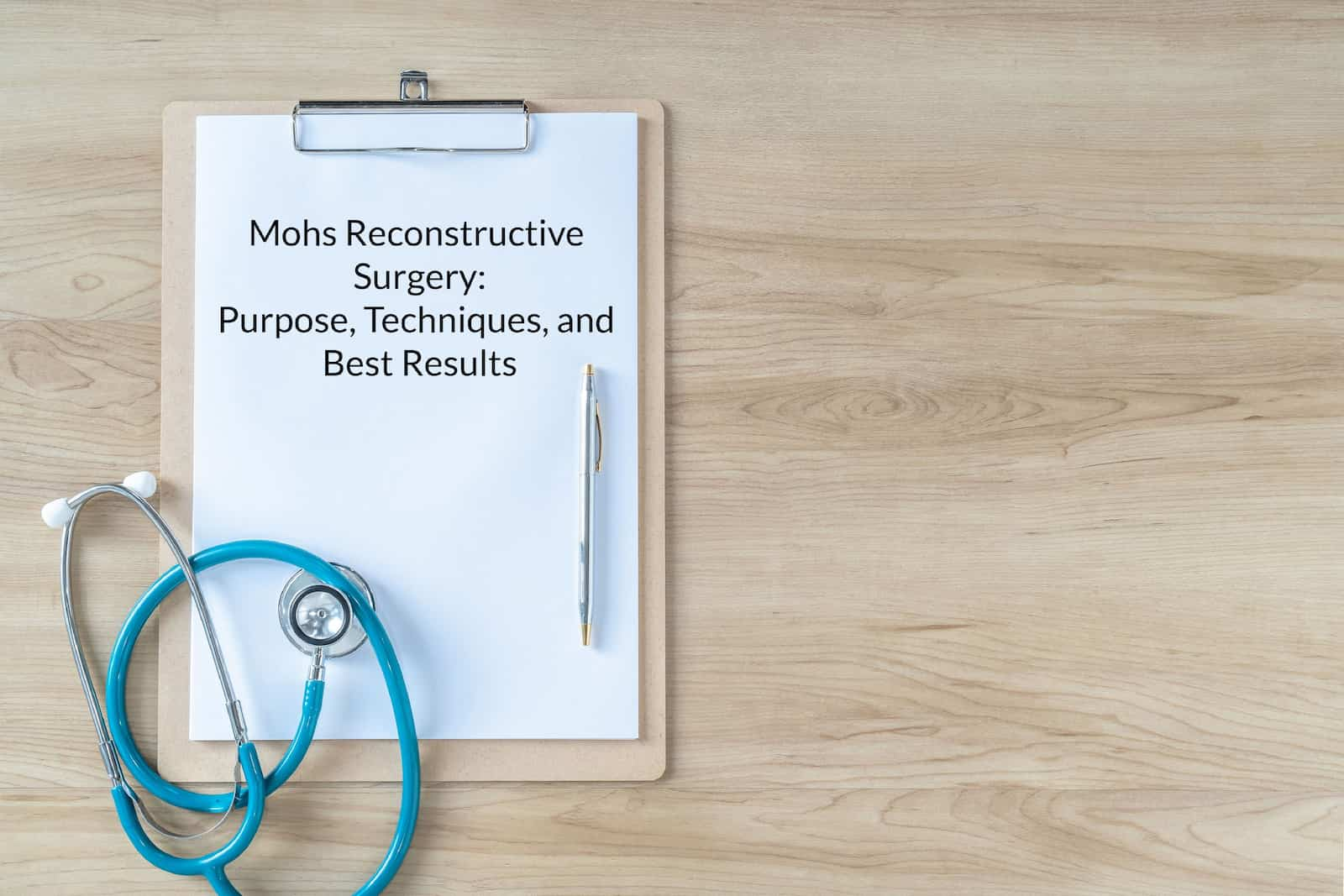Skin cancer affects 9,500 people every day in the United States alone. The abnormal growth of skin cells may appear as a flesh-colored nodule that is often painless, but it is important to have these abnormal growths examined as soon as possible. Treatment for various types of skin cancer includes chemotherapy, radiation therapy, and surgery, like the Mohs procedure with the highest success rates.
Mohs surgery is an outpatient procedure performed by medical professionals to remove 100% of the cancer cells and cancerous tissues surrounding the tumor. The Mohs procedure is the most effective technique in treating skin cancers, like basal cell carcinoma (BCC), squamous cell carcinoma (SCC), and nonmelanoma skin cancer, but it is accompanied by some risks like muscle weakness, numbness, or deformities requiring reconstructive surgery.
What is Mohs reconstructive surgery aka “post-Mohs surgery”?
Skin cancer can occur anywhere on the body and does not discriminate based on age, race, or gender. When cancerous cells invade a sensitive area or an area of importance in the body like the genitals, nose, lips, or tissue around the eyes, a dermatologist will team up with a board-certified plastic surgeon with two main goals: cure the skin cancer and reconstruct any defects resulting from surgery to improve the patient’s comfort and confidence in their appearance.
Post-Mohs surgery is a type of reconstructive surgery performed by a plastic surgeon that specializes in the area where cancer has been removed from. For example, cancerous cells that have invaded areas of the face that are excised through a Mohs procedure will yield better cosmetic results with the skill of a board-certified facial plastic surgeon. Mohs reconstructive surgery is equally as important as the initial procedure to remove cancer itself as it serves to eliminate the daily reminder of trauma that the patient has endured.
What is the purpose of the Mohs reconstructive surgery?
If you have had Mohs surgery to remove cancerous skin cells and surrounding tissue from an area of the body of importance like the face, hands, feet, or genitals, you may be a candidate for Mohs reconstructive surgery. Prior to the initial Mohs surgery, your doctor will go over the risks with you of surgery like bleeding, infection, or the need for additional plastic surgery to correct any defects based on how much tissue must be removed.
Once the Mohs procedure has been completed, you are in good overall health and have been given the all-clear by your dermatologist, a plastic surgeon will review the case, consult with your doctor, and provide a care plan for post-Mohs surgery.
Scarring from Mohs surgery is often minimal, however, there is no way to know definitively how much tissue will need to be removed until testing ensues to assess for clear margins. People with larger cancerous tumors can expect to have a larger scar but even those with small tumors can have a significant amount of tissue beneath the surface invaded by cancerous cells.
What are Mohs reconstructive surgery techniques?
The Mohs procedure is designed to treat qualifying cases of skin cancer, like basal cell carcinoma and squamous cell carcinoma. No two outcomes for treatment will be identical as there are many factors that affect the cosmetic outcome following surgery. The primary course of healing from Mohs surgery is to allow the wound to close by itself, but based on the amount of tissue removed or the size of the wound, this may not be possible.
The approach to post-Mohs reconstructive surgery requires a personalized approach with modern techniques like:
Flap surgery
Flap surgery is a modern technique used by plastic surgeons that allow a surgeon to harvest tissues from one area of the body without disrupting blood flow and transplanting them to another area of the body. There are three common methods used during flap surgery, including the use of a local flap, a regional flap, or a free flap depending on the best location to harvest the tissue and the size of the defect being reconstructed.
Skin graft
Areas of the body where skin and tissue are not easily stretched might require skin grafting surgery to correct the defect and close a wound. During skin grafting, a surgeon will remove a layer of tissue from a previously marked site and place it securely over an open superficial wound.
Bone grafting
Based on the involvement of cancerous cells that have invaded the body, bone grafts may be used to replace damaged bone, repair an affected area, or rebuild what has been removed. Bone grafting surgery is used in severe cases of post-Mohs reconstructive surgery with bone fragments harvested from the legs, hip, or ribs.
Cartilage grafting
Once Mohs surgery has commenced, if tissue margins are not clear upon approaching non-structural cartilage, your doctor will remove the cartilage and consult with plastic surgeons to repair the defect at a later date. Cartilage grafting is often used to reconstruct nasal defects after Mohs surgery with ear cartilage being the preferred harvesting site. By removing cartilage that may have been affected by cancerous cells, the risk of cancer relapse is decreased.
Tissue expansion
Tissue expansion is a straightforward procedure that is just as it sounds. During this procedure, a silicone balloon expander is placed in an area of the skin and slowly filled with salt water to allow the body to grow new skin by stretching over a slow period. It is commonly used during breast reconstruction surgery. Plastic surgeons also utilize this approach in improving congenital defects involving the skin, cosmetic procedures, and surgery, like Mohs surgery. It is important to remember that the goal of tissue expansion is not perfection, it is an improvement.
How to get the best results for Mohs reconstructive surgery
The Mohs procedure is performed more than 800,000 times per year in the United States alone with that number rapidly increasing as more and more skin cancer cases are diagnosed. Mohs surgery is one of the only interventions available in treating skin cancer with absolute results of 100% removal of cancerous cells. This certainty, however, is accompanied by greater risks of deformities or defects than less-invasive chemotherapy and radiation.
In cases of severe involvement of tissue beneath the surface of the skin during a Mohs procedure, the wound may not heal appropriately or the skin may not have enough elasticity to cover the incision site. When this occurs, your doctor will bring in a plastic surgeon specializing in reconstructive surgery on the area affected to yield the best results possible based on your individualized needs.
Plastic surgery is a type of surgical specialty to provide alteration, restoration, or reconstruction to a specific area of the body based on the wishes and needs of the patient. No two cases seen by a certified plastic surgeon are the same. Therefore, the technique used will differ case by case.
Post-Mohs reconstruction in Houston
At Houston Center for Facial Plastic Surgery (HCFPS), our board-certified plastic surgeon Dr. Taylor DeBusk, MD has undergone extensive training to hone his skills in facial reconstructive surgery to correct damage or defects caused by the Mohs procedure. The team at Houston Center for Facial Plastic Surgery strives to provide excellence in all areas of patient care from the moment they walk through our door to their final appointment when they have been released to resume their normal daily activities.
Our specialists use a combination of modern technology and their expertise through personal and professional experience to restore and reconstruct areas of the body with the best results possible. At HCFPS, patient safety is never compromised to yield different results. When it comes to facial plastic surgery, patients seek out the best of the best whether they are local or require travel.
At Houston Center for Facial Plastic Surgery, our doctors have experience in all areas of cosmetic non-surgical and surgical procedures to provide excellence in both expertise and quality care.





